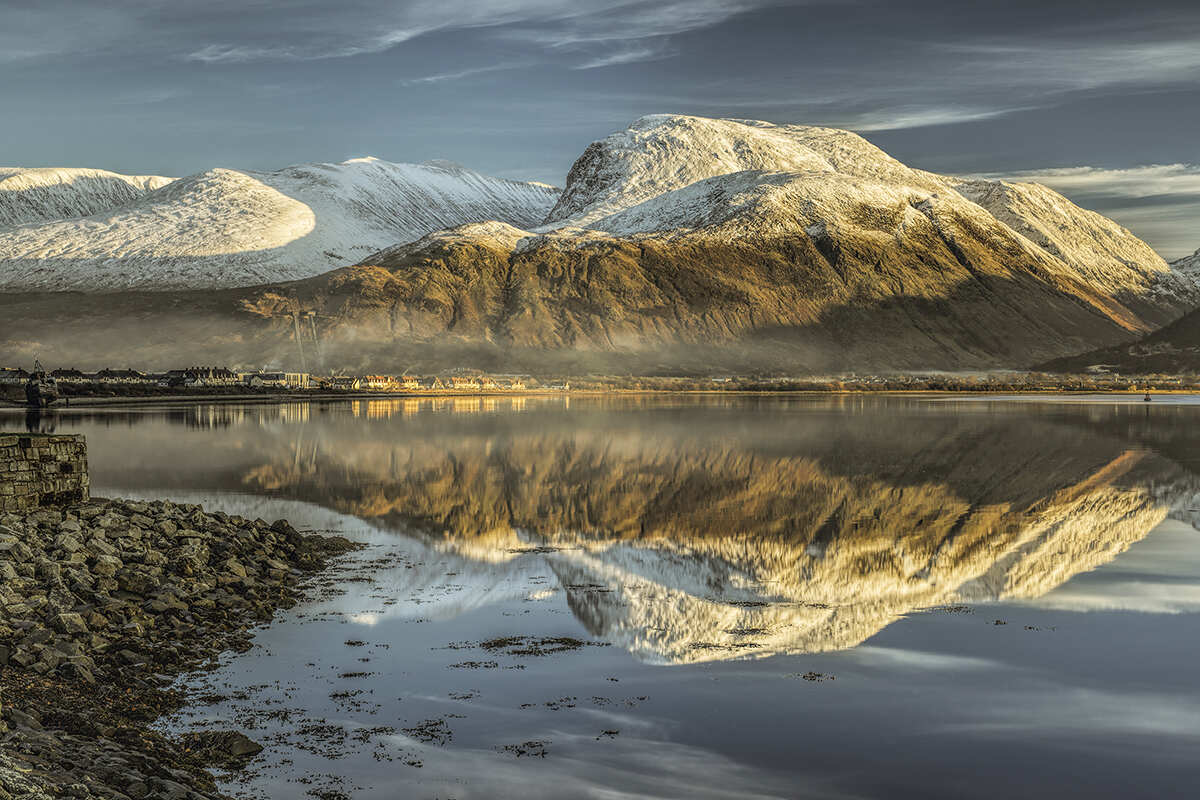
Rory Walsh gets to the bottom of Ben Nevis, Britain’s highest mountain
Discovering Britain
View • Rural • Scotland • Web Guide
At the village of Corpach on the banks of Loch Linnhe, the summit of Ben Nevis emerges above its neighbours like a seal’s head in rolling waves. Fresh winter snow dusts the mound white. In warmer months, it’s mostly brown. Depending on the season, aerial photos of Ben Nevis recall a lump of cold dough or a loaf of baked bread. Yet from the ground, Britain’s highest mountain can be difficult to see. ‘The Ben’ is frequently shrouded in mist. The mountain’s location and elevation – standing 1,345 metres tall beside a sea loch – create a cloudy microclimate subject to sudden storms. The name Ben Nevis may derive from the Gaelic ‘beinn nèamh-bhathais’ or ‘mountain with its head in the clouds’. An alternative suggestion is ‘beinn nibheis’ or ‘venomous mountain’. Both warn of the dangers to under-prepared visitors.
Between 100,000 and 130,000 people climb Ben Nevis each year. The first recorded ascent was in 1771 by botanist James Robertson, and countless climbers have reached the top since, as have a wheelbarrow, a piano, a hospital bed and a Ford Model T. Professional geographer Chris Speight has climbed Ben Nevis ten times. ‘I enjoy Munro bagging, but Nevis is something else,’ he says.
At the summit, the stony plateau includes the remains of a weather observatory used until 1904. In ideal weather, the views span 190 kilometres to County Antrim in Northern Ireland. The closest equivalent peaks in any direction are 739 kilometres away in western Norway. ‘You feel like you’re on top of the world,’ says Speight. Yet the top of Ben Nevis was once the bottom of an earlier landform.
The plateau is the remains of the Nevis Caldera, a volcanic crater that collapsed around 400 million years ago. Evidence appears where pale granite, formed deep in the volcano’s underground chambers, lies next to dark basalt – the remains of surface lava. Millennia of erosion since, including by Ice Age glaciers, have shaped what we (sometimes) see today. So has human activity.
‘Ben Nevis is an obvious sign of climate change,’ says Speight. He explains: ‘The north face is almost vertical, with deep, narrow gullies that collect snow.’ Historically, these snow patches often lasted from one winter to the next. In 2017, for the first time in 11 years, the snow on Ben Nevis melted completely. September 2022 saw it snow-free for the third time in five years. The mountain with its head in the clouds, it seems, helps to keep our feet on the ground.
Discover more about Britain…





